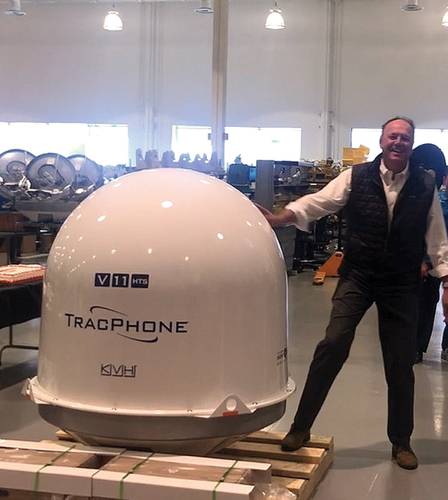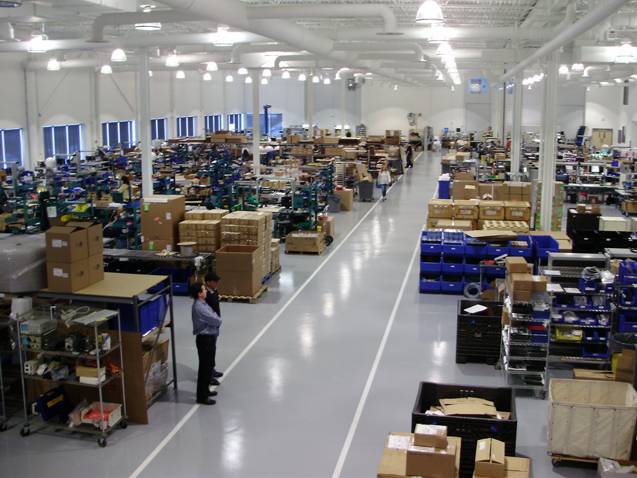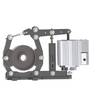Interview: Martin Kits van Heyningen, CEO, KVH
Connectivity is the backbone of modern maritime operations as ships and boats at sea increasingly become connected. We recently met with Martin Kits van Heyningen, CEO, KVH, to discuss the evolution of communication in the maritime sector and so much more, as KVH is diverse and engaged in a number of markets -- including autonomy for 10 years with work on about 30 different platforms for self-driving vehicles.
To start, give us a “State of KVH” today.
We started originally in the leisure market, and we have about 85% market share for leisure and small craft, but over the last 10 years the business has been dominated by the commercial market. Most of our revenue now come the commercial maritime: merchant marine, offshore vessels, fishing vessels make up the bulk of our business today.
How about a “State-of-the-market.” Specifically, where do you see growth opportunities?
It’s hard to generalize ‘maritime’ (because there are so many different facets); what we see is that merchant is very strong, offshore oil is still weak but it seems like its coming back a bit; fishing is strong and leisure is strong.
Within commercial maritime there are many different types of users. There are the requirements to run the ship … the communications, the phones, the data back and forth, actual operational portion of running the ship … then there’s the crew welfare component where today’s mariners don’t want to be at sea for six months with no contact with friends and family. Every year these segments get stronger, and crews increasingly don’t want to be onboard vessels that don’t have a good internet connection. This is a driver, and it has become a cost of doing business for most of the professional companies in the business.
Another component is the IOT and the machines talking to each other. Machine to machine data transfer is a big driver for connectivity. Martin Kits van Heyningen, CEO, KVH. Photo: KVHKVH’s Agile Plans was launched not so long ago, but we understand it has become somewhat of a sensation from the KVH perspective. Give us a short overview of the Agile Plans.
Martin Kits van Heyningen, CEO, KVH. Photo: KVHKVH’s Agile Plans was launched not so long ago, but we understand it has become somewhat of a sensation from the KVH perspective. Give us a short overview of the Agile Plans.
We launched it two years ago and 70% of the equipment going out today is with Agile Plans. With Agile Plans, everything is bundled into a single monthly price and there is no commitment. It’s an operating expense because you don’t want to come up with any cash. We install it and you don’t even pay for install, plus there is no commitment. (Bottom line) we want to earn your business every day, and if you don’t like it or it’s not performing, we’ll just take it off the vessel and you’re done. Interestingly, the ‘churn’ on this line is lower than on any other part of their business.
Why is the flexibility of the plan important to the commercial sector?
Ship managers move vessels; they’re bought and sold, and sometime you lay them up. (Agile Plans) gives them flexibility and risk management. If they manage 50 vessels and sell five, they can simply return the equipment and keep the connectivity for the 45 remaining vessels.
Not only do we bundle in the hardware, the air time and the installation, but we also include some of our media content, so they get video news from home, a dozen TV channels of news, print news from 70 countries, crew welfare content, digital chart updates, etc.
The digitalization trend is ubiquitous, but in maritime, what’s the ‘reality on the street’? How quickly and comprehensively is commercial maritime adopting high speed communication solutions?
As far as the use of VSAT for running the business of maritime and keeping the crew connected, I think that part is really taking off. It’s a trend that is finally moving by itself.
The other part is the IOT side, and it’s here that the business of maritime is still behind other industries in terms of factory automation and analytics.
That’s nice transition, as we understand that “KVH Watch” is now making inroads to some commercial sectors. What is KVH Watch?
Internally we call this KVH Watch 2.0 because we had a version that preceded this which we never launched. It’s interesting (because it strikes at the matter of how ready this industry is for new technology.) The first version of Watch captured all of the data on the vessel, it stored it in the cloud and offered some incredible analytical tools, graphing and digital notebooks where different parameters could be compared. It was the ideal tool for analytics, and we beta tested it with a couple of our big fleets and said ‘this is great for your data scientists so that they can go in and look at these analytics.’ (In response) we just received a big blank stare back and got the question … ‘what’s a data scientist?’”
We learned something there.
Watch 2.0 is not targeted to the vessel owner, it’s targeted to the equipment manufacturers – the MAN’s, the Wärtsilä’s, the Kongsbergs – they are the ones that can access and use the analytics immediately because they know inherently what a vibration in cylinder number two means for the health of the engine.
So essentially Watch 2.0 is for the equipment makers. Instead of KVH competing with them to provide onboard analytics, they are enabling them to bring their solution to scale, rapidly. If they get an order for analytics on 200 vessels, they can deliver rapidly.
It was a a similar value proposition targeted at a different user group, and we’ve gotten a much more positive response. Sometimes you have to simply pivot and realize that you’re not as clever as you thought you were the first time!
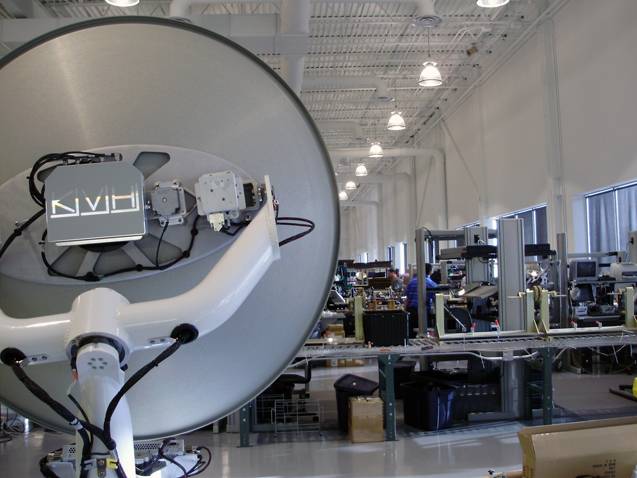 Manufacturing facility: “We feel that it’s very important for us to control the entire ecosystem: we build the product, we write the software, we run the network, we have the infrastructure, we do the rate plans and we do the installations … we control the customer experience, which we feel is unique to our offering.” Photo: KVHWould this, then, put you in competition with OEMs and IOT providers in the supply of analytics?
Manufacturing facility: “We feel that it’s very important for us to control the entire ecosystem: we build the product, we write the software, we run the network, we have the infrastructure, we do the rate plans and we do the installations … we control the customer experience, which we feel is unique to our offering.” Photo: KVHWould this, then, put you in competition with OEMs and IOT providers in the supply of analytics?
We originally intended to sell the analytics package, which would have put KVH in competition with the OEMs and IOT companies. Instead, we’re enabling these companies to launch their products at scale. So, if a Kongsberg goes out and sells it’s solution to a fleet of 200, we’ll be out there tomorrow installing 200 VSATs so they can sell their service. Each of these IOT companies needs to have their connectivity problem solved so that they can sell whatever they’re selling, whether it’s fuel savings or reduced maintenance or route planning … there are many applications for IOT, but the one (common) thing you need is connectivity.
So, bottom line, what’s the advantage for the OEM?
It’s kind of like Agile Plans with a different customer target. It’s bundled and cared for (by KVH), a high speed (10MB/sec VSAT) which allows allowing companies to intervene when needed. If something goes wrong with a piece of equipment, a company can ‘jump onboard’ from the shore and try to fix the problem over the VSAT, either directly or through video conference, while the vessel is sailing. It can help to save money instead of sending repair crews to a ship around the world.
You can’t discuss ‘connectivity’ without discussing ‘cyber security.’
For cyber security purposes the owners want a separate network/antenna so it’s air-gapped, it’s not connected to the ship’s other network, it’s not connected to the internet.
You can’t discuss connectivity without discussing autonomy. How does the overall KVH portfolio play into the push toward autonomy?
KVH has two parts to its business, navigation and communication. The navigation started in maritime, but it evolved to the land as we make precision fiber optic gyros that can be used for self-driving vehicles. We’ve been involved in autonomy for 10 years (and today) we’re on about 30 different platforms for self-driving vehicles. The whole autonomy thing is interesting … on land, at sea and in the air. Today we’re on a number of different pilot programs like U.S. Navy autonomous support vessels. I think the challenge is really getting the vessel to run itself; the navigation part is really easy compared to other items. Every ship in the world has an autopilot, and you have to add collision avoidance part. Technically that’s very straight forward. The hard part is keeping the ship running … fixing things along the way.
In conclusion, please summarize how KVH is investing today?
We sold our maritime training business for $90 million last year and investments today are focused on three areas.
1.KVH Watch: IOT for maritime is going to be a huge business. You have a very expensive platform running in remote locations with an understaffed crew onboard who doesn’t have the technical capability to maintain all of the equipment as it becomes more complicated. We’re investing in software and technical development.
2.Agile Plan: We’ve had good success, and we’re investing to promote that in marketing and in back-office, technical and installation support.
3.Photonic Chip to make fiber optic gyros for navigation very inexpensively. Today the fiber optic gyros are super accurate, literally measuring the spin rate of the planet Earth, but they’re expensive. This new technology brings that cost down to the point of $150 to $200, something you need for autonomous vehicles.
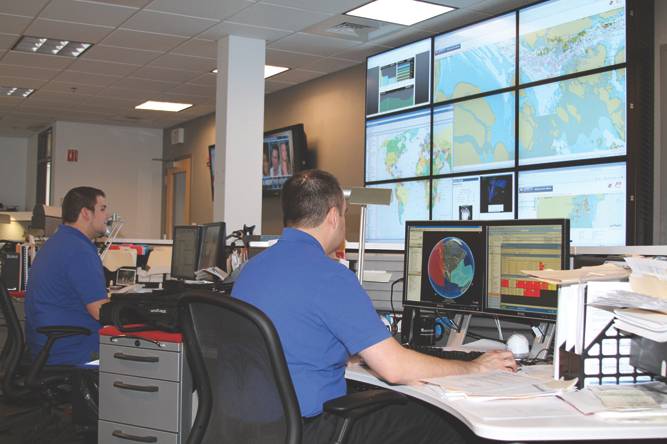 KVH Network operations. Photo: KVH
KVH Network operations. Photo: KVH






